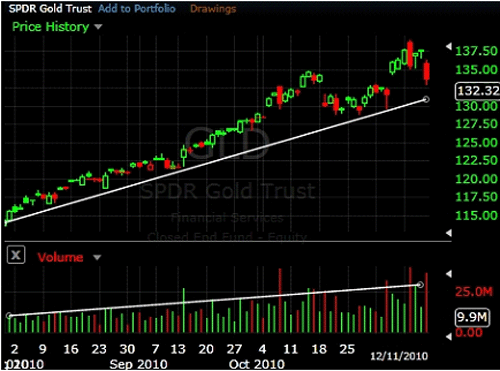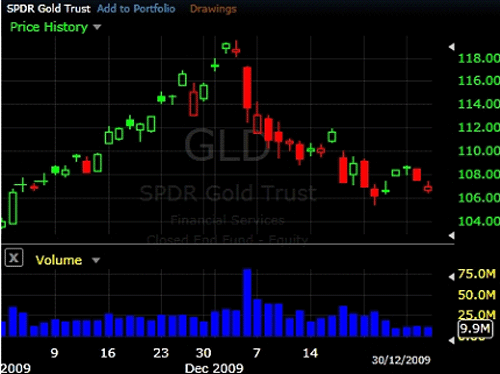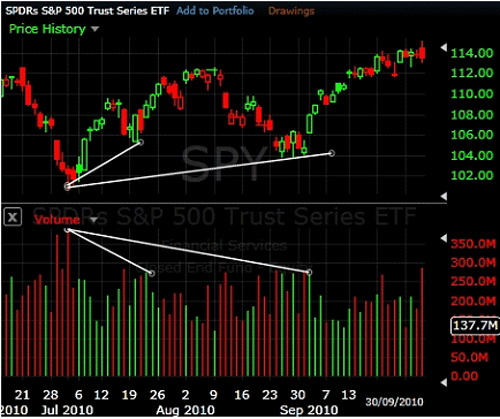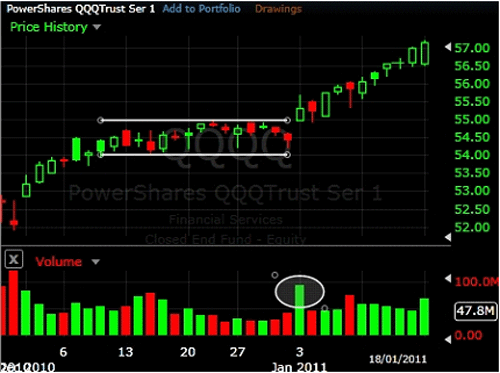Volume is a measure of how much of a given financial asset has been traded in a given period of time. It is a very powerful tool, but it's often overlooked because it is such a simple indicator. Volume information can be found just about anywhere, but few traders or investors know how to use it to increase their profits and minimize risk.
TUTORIAL: Analyzing Chart Patterns
For every buyer there needs to be someone who sold them the shares they bought, just as there must be a buyer in order for a seller to get rid of his or her shares. This battle between buyers and sellers for the best price on all different timeframes creates movement while longer term technical and fundamental factors play out. Using volume to analyze stocks (or any financial asset) can bolster profits and also reduce risk.
Basic Guidelines for Using Volume
When analyzing volume, there are guidelines we can use to determine the strength or weakness of a move. As traders, we are more inclined to join strong moves and take no part in moves that show weakness - or we may even watch for an entry in the opposite direction of a weak move. These guidelines do not hold true in all situations, but they are a good general aid in trading decisions.
Volume and Market Interest
A rising market should see rising volume. Buyers require increasing numbers and increasing enthusiasm in order to keep pushing prices higher. Increasing price and decreasing volume show lack of interest and this is a warning of a potential reversal. This can be hard to wrap your mind around, but the simple fact is that a price drop (or rise) on little volume is not a strong signal. A price drop (or rise) on large volume is a stronger signal that something in the stock has fundamentally changed.
Exhaustion Moves and Volume
In a rising or falling market we can see exhaustion moves. These are generally sharp moves in price combined with a sharp increase in volume, which signal the potential end of a trend. Participants who waited and are afraid of missing more of the move pile in at market tops, exhausting the number of buyers. At a market bottom, falling prices eventually force out large numbers of traders, resulting in volatility and increased volume. We will see a decrease in volume after the spike in these situations, but how volume continues to play out over the next days, weeks and months can be analyzed by using the other volume guidelines. (For related reading, take a look at 3 Key Signs Of A Market Top.)
Bullish Signs
Volume can be very useful in identifying bullish signs. For example, imagine volume increases on a price decline and then price moves higher, followed by a move back lower. If price on the move back lower stays higher than the previous low, and volume is diminished on second decline, then this is usually interpreted as a bullish sign.
Volume and Price Reversals
After a long price move higher or lower, if price begins to range with little price movement and heavy volume, often it indicates a reversal. (See Retracement Or Reversal: Know The Difference for additional information)
Volume and Breakouts Vs. False Breakouts
On the initial breakout from a range or other chart pattern, a rise in volume indicates strength in the move. Little change in volume or declining volume on a breakout indicates lack of interest and a higher pro****lity for a false breakout.
Volume History
Volume should be looked at as relative to recent history. Comparing today to volume 50 years ago provides irrelevant data. The more recent the data sets, the more relevant they are likely to be.
Volume Indicators
Volume indicators are mathematical formulas that are visually represented in most commonly used charting platforms. Each indicator uses a slightly different formula and, therefore, a trader should find the indicator that works best for their particular market approach. Indicators are not required, but they can aid in the trading decision process. There are many volume indicators; the following will provide a sampling of how several can be used.
On Balance Volume (OBV)
OBV is a simple but effective indicator. Starting from an arbitrary number, volume is added when the market finishes higher, or volume is subtracted when the market finishes lower. This provides a running total and shows which stocks are being accumulated. It can also show divergences, such as when a price rises but volume is increasing at a slower rate or even beginning to fall. Figure 5 shows that OBV is increasing and confirming the price rise in Apple Inc's (AAPL) share price. (For more on the OBV, see On-Balance Volume: The Way To Smart Money.)
[b]Chaikin Money Flow[/b]
Rising prices should be accompanied by rising volume, so this formula focuses on expanding volume when prices finish in their upper or lower portion of their daily range and then provides value for the corresponding strength. When closes are in the upper portion of the range and volume is expanding, the values will be high; when closes are in the lower portion of the range, values will be negative. Chaikin money flow can be used as a short term indicator because it oscillates, but it is more commonly used for seeing divergence. Figure 6 shows how volume was not confirming the continual lower lows (price) in AAPL stock. Chaikin money flow showed a divergence that resulted in a move back higher in the stock. (For related information, see Discovering Keltner Channels and the Chaikin Oscillator.)






No comments:
Post a Comment